This post may contain affiliate links. Please read our disclosure policy.
How to make wheatgrass shots and juice (and why you’d want to) – an amazing, detox green juice.
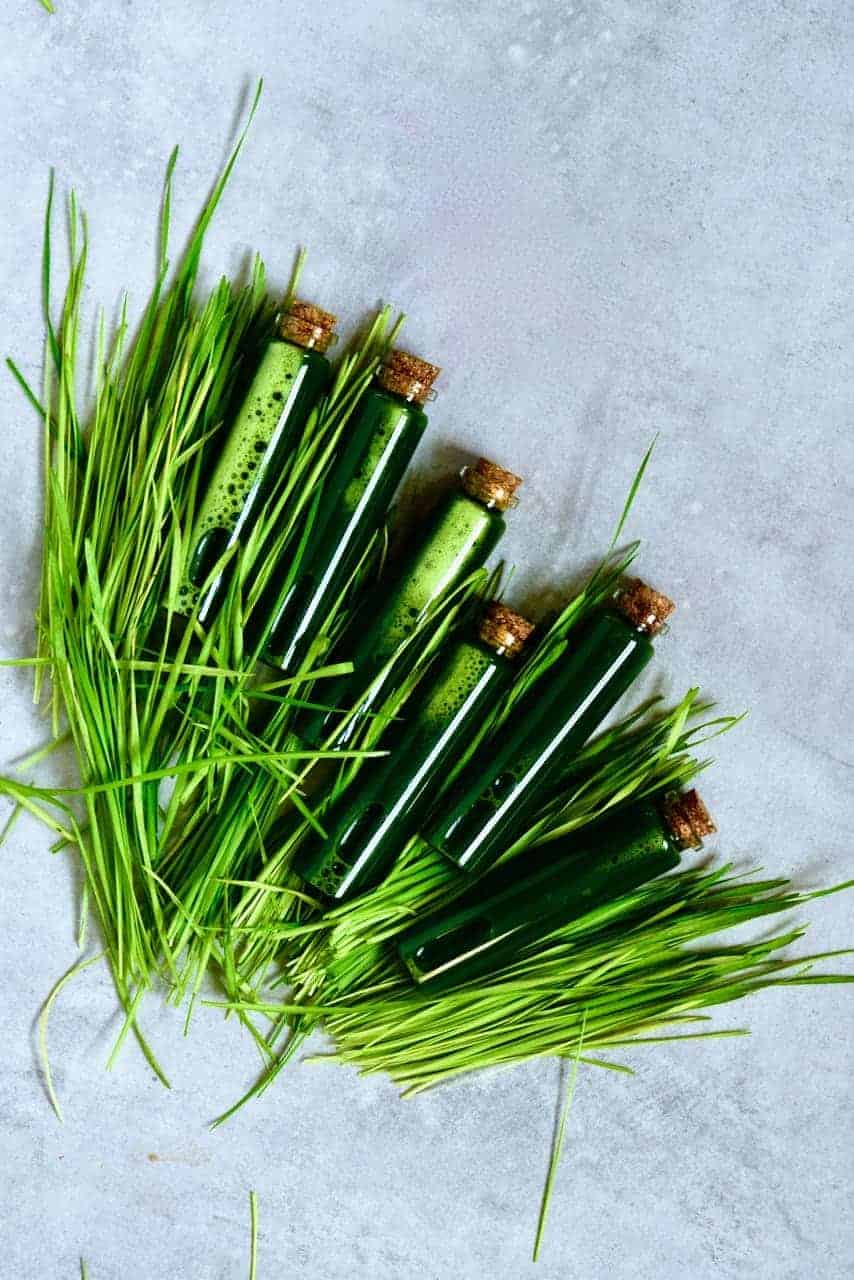
Can someone tell me what has happened to 2020 – because this entire year has felt a bit like the twilight zone. For one thing, I swear I’d already posted this simple DIY for how to make wheatgrass shots at home, but apparently not.. So here goes.
If you haven’t already seen it, I posted all about How To Grow Wheatgrass At Home ( with & without soil) late last year. On that post, I talk in detail about how to implement it into your diet and, of course, how to grow your own at home so you can save money.
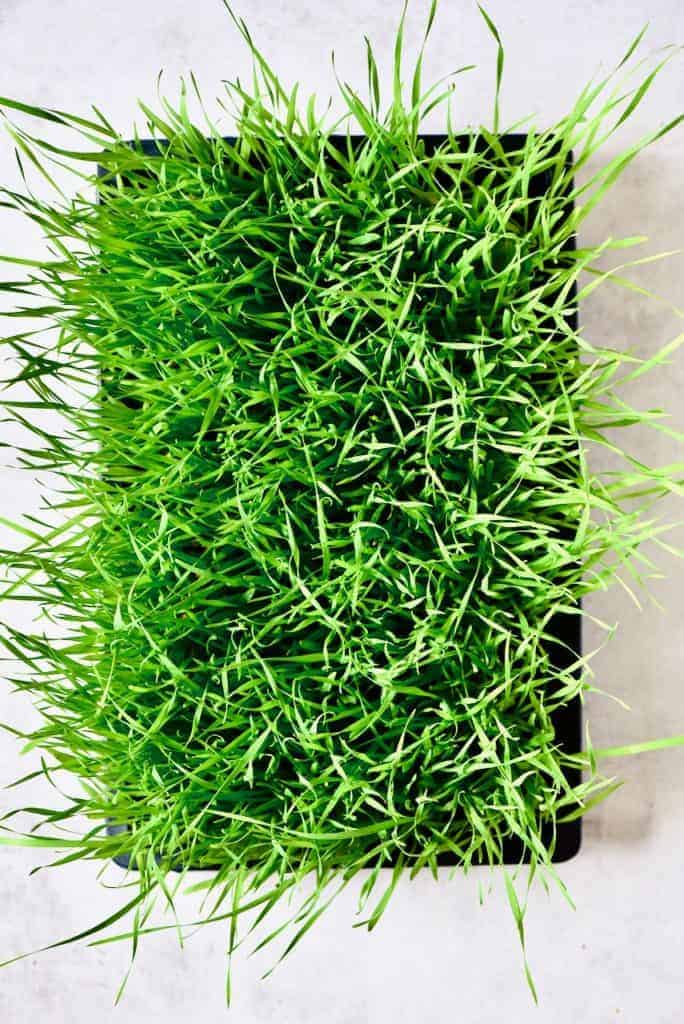
What I didn’t do, however, is give you a quick and simple DIY for wheatgrass shots and juice (I mention both words as they’ll often serve different purposes). These are perfect to start adding to your diet now.
In my post about growing wheatgrass, I go into details about the various things – so you can head on over there if you want to read more about that. However, I’ll also quickly summarise for you below too.
I even have two different methods for extracting the juice for you.
Want to save this recipe?
The two methods for wheatgrass juice
Wheatgrass juice can be made one of two ways – with a juicer or with a blender. As someone who owns both, I’ll always use my juicer when I can because I know it extracts as much juice as possible, squeezing out the nutrients, leaving you with less leftover pulp.
When using a blender, you have to combine your wheatgrass with water. This dilutes the juice, and it can be less nutritious. However, it may also be slightly more palatable and an excellent way to start drinking wheatgrass juice as a ‘newbie’.
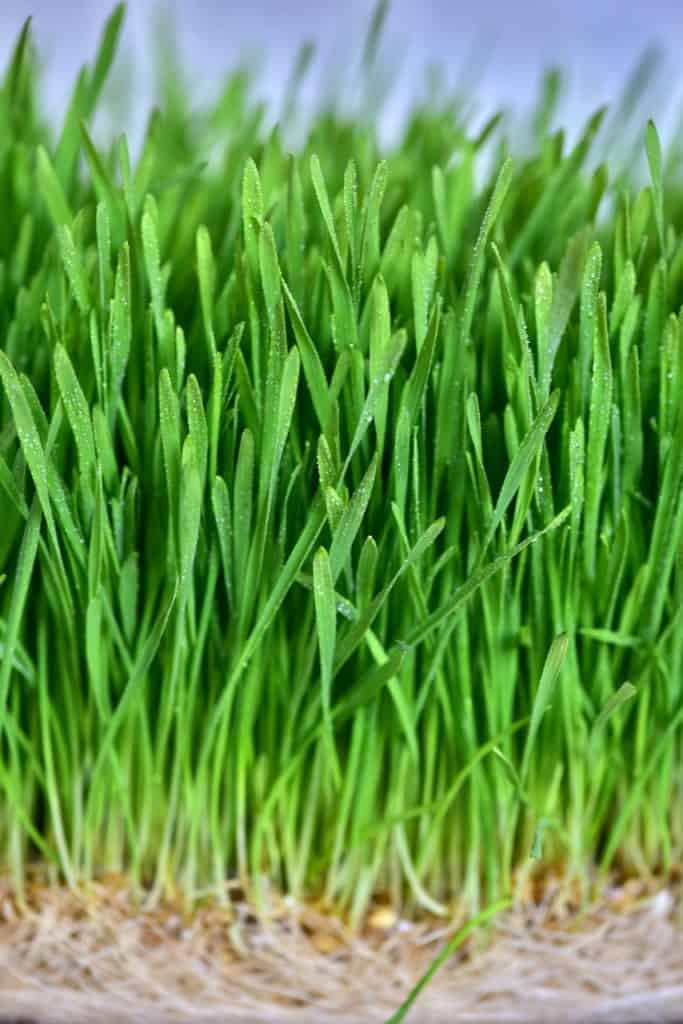
Notes for any wheatgrass newbies
- When you first start consuming wheatgrass juice, it may cause slightly tummy upset or even side effects like headache, fatigue and nausea. It is a powerful detox juice and, if your body isn’t used to it (or needs a good detox), then it may take time to get used to.
- The best method to combat this when you want to start drinking shots immediately is to start with just a 1/2 shot (30ml) – then slowly increase this. You could also begin by adding the wheatgrass juice to other recipes, so it is ‘diluted’ and smaller amounts.
- It’s best to drink wheatgrass juice in the morning, on an empty stomach, and wait an hour before eating anything. This will help you to avoid nausea.
- Wheatgrass juice can be added to juice blends with other fruits and vegetables, within smoothies, as part of salad dressings and more!
- You can also use the juice for non-ingested means including as a bath to soothe skin and reduce scarring, soothe bites and scratches and more.
- You can buy wheatgrass powder. However, I always prefer to use fresh when I can, as nutritional values can be different.
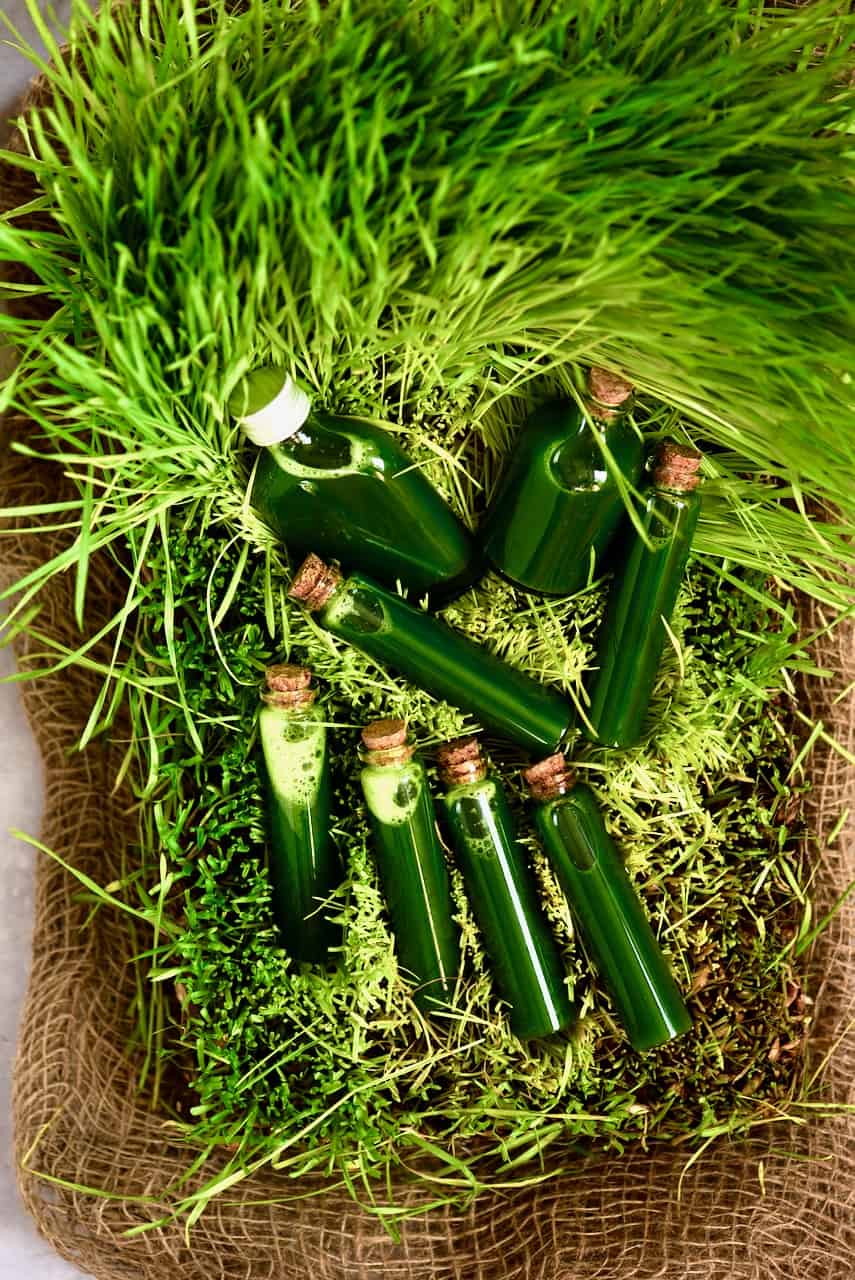
How to juice wheatgrass
Needed:
Fresh wheatgrass – check out my Homegrown wheatgrass DIY (with & without soil) or you can buy it.
Note* Around 300 gr wheatgrass would yield about 200-250 ml juice.
Steps:
Cut the wheatgrass as low as possible just before you’re ready to juice it.
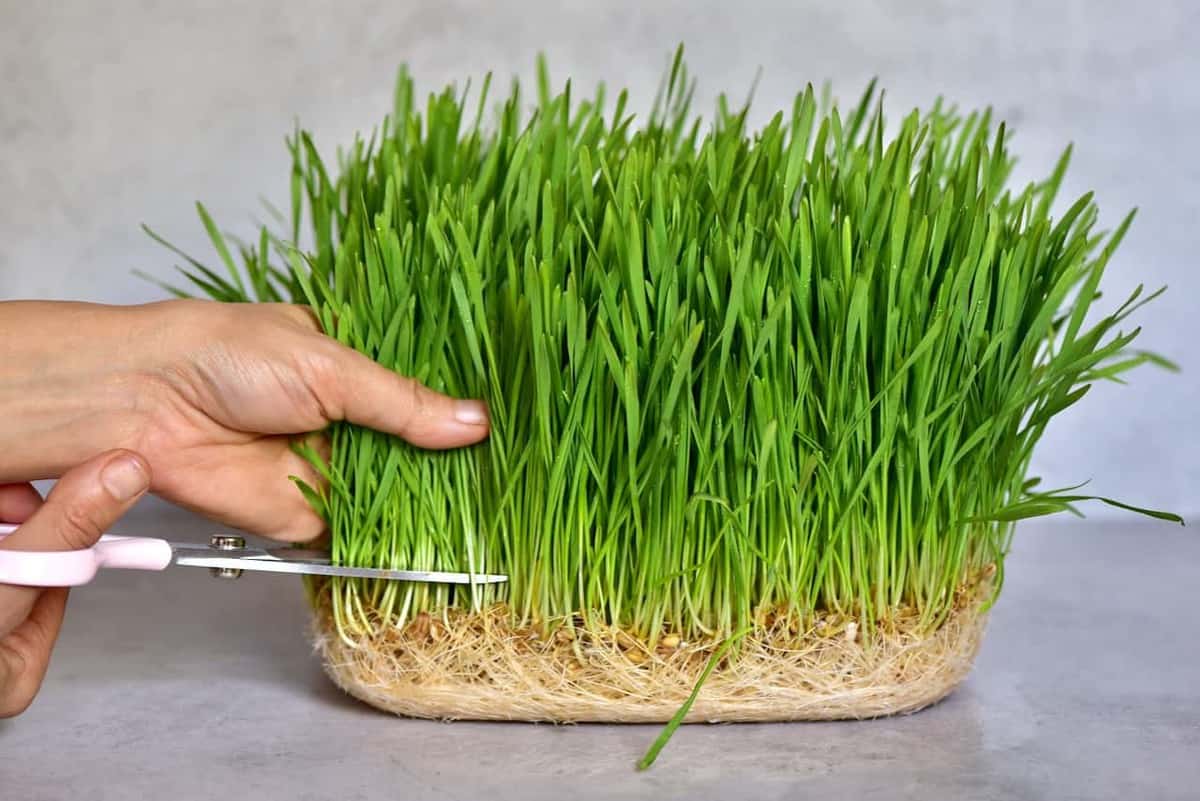
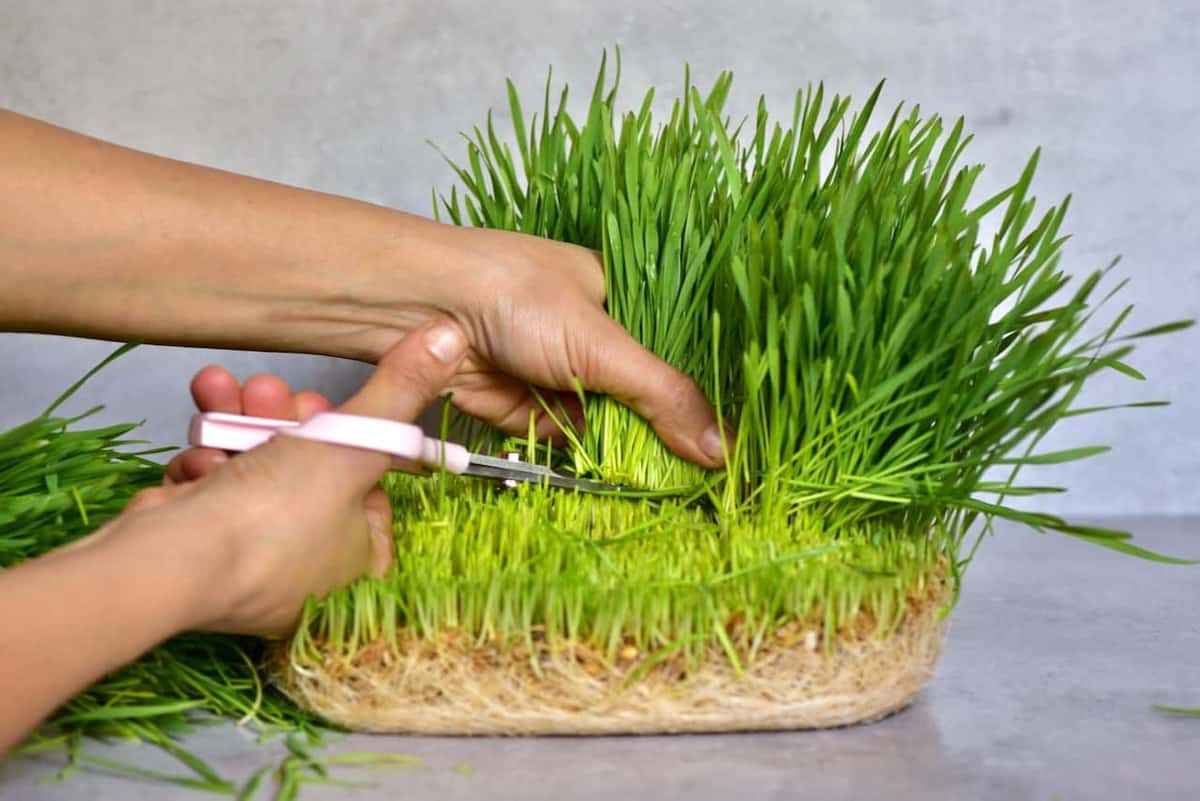
Rinse the wheatgrass (especially if it’s not homegrown) and discard any leaves that have turned completely yellow.
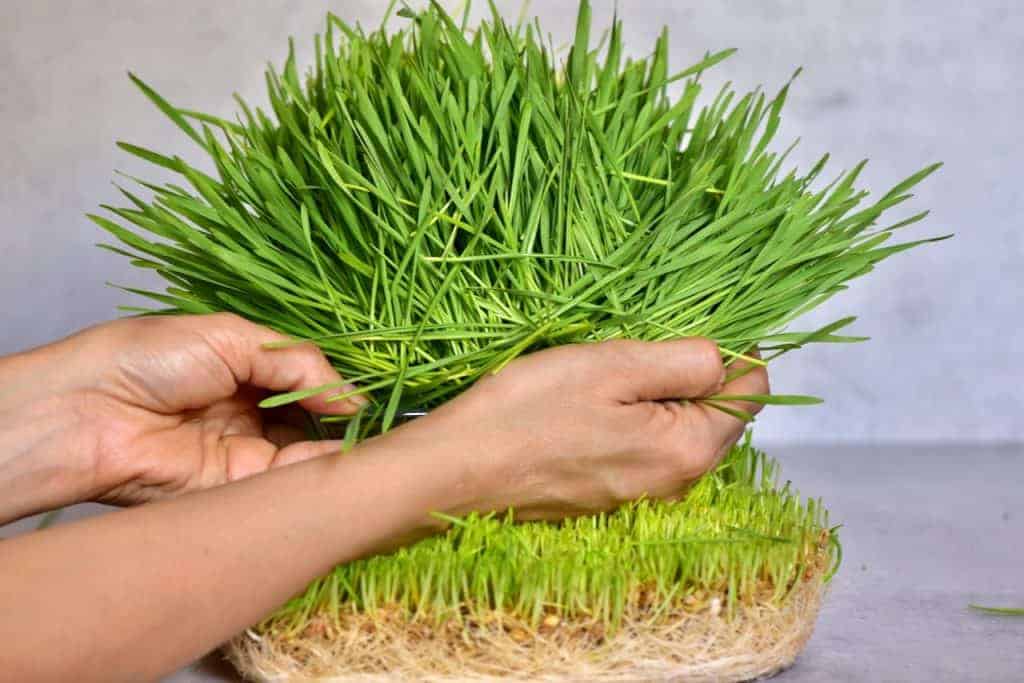
If using a juicer:
Pass small bunches of wheatgrass through the juicer.
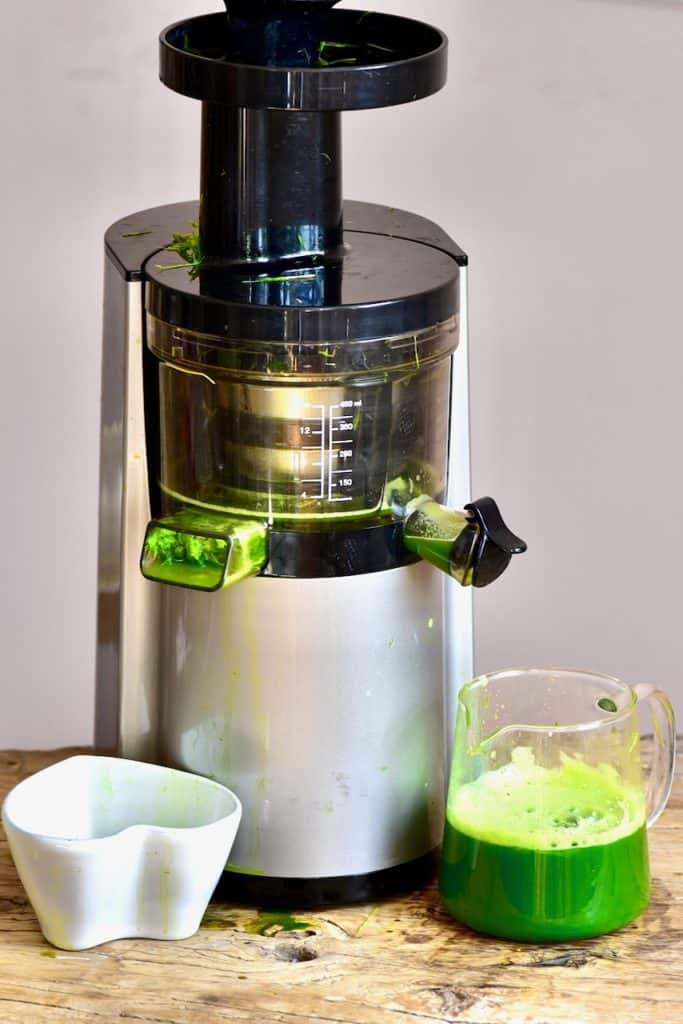
It’s possible that the juicer may get jammed once in a while, so remove the pulp manually and then continue.
Eventually, you’ll be left with all the juice and the small amount of leftover pulp (see below for how to use this).
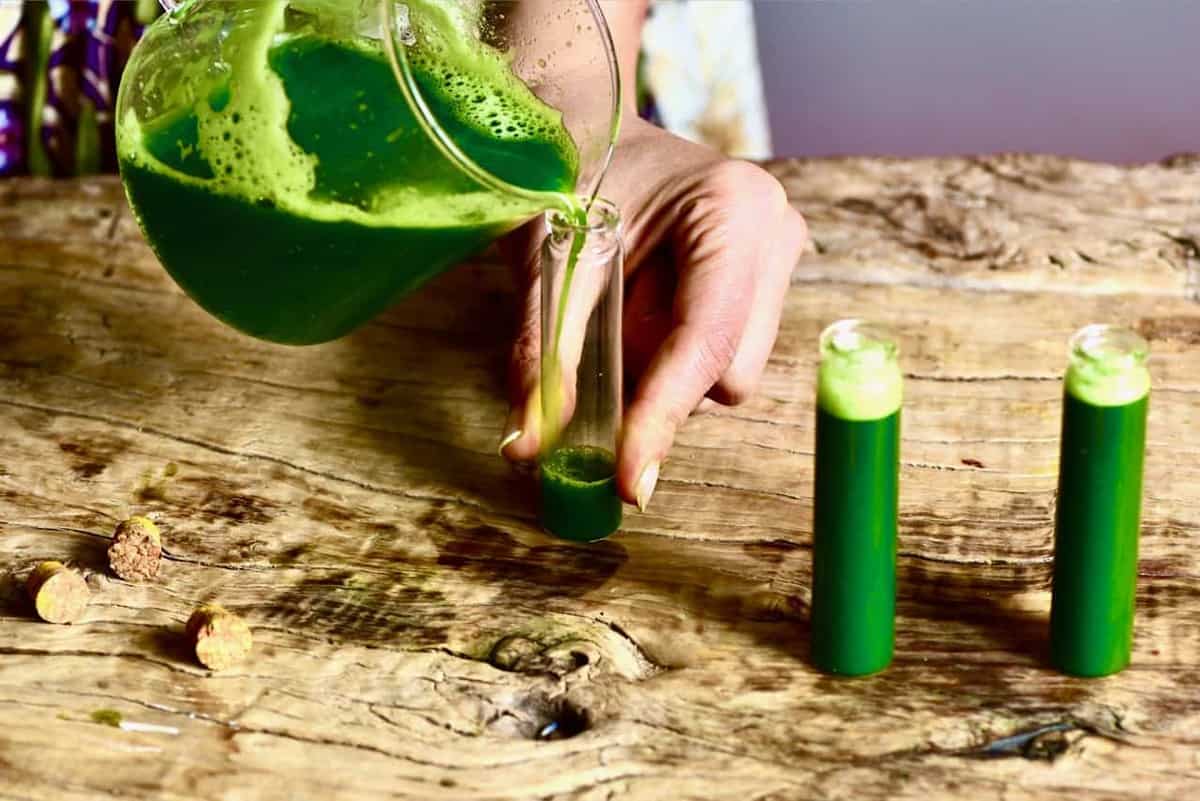
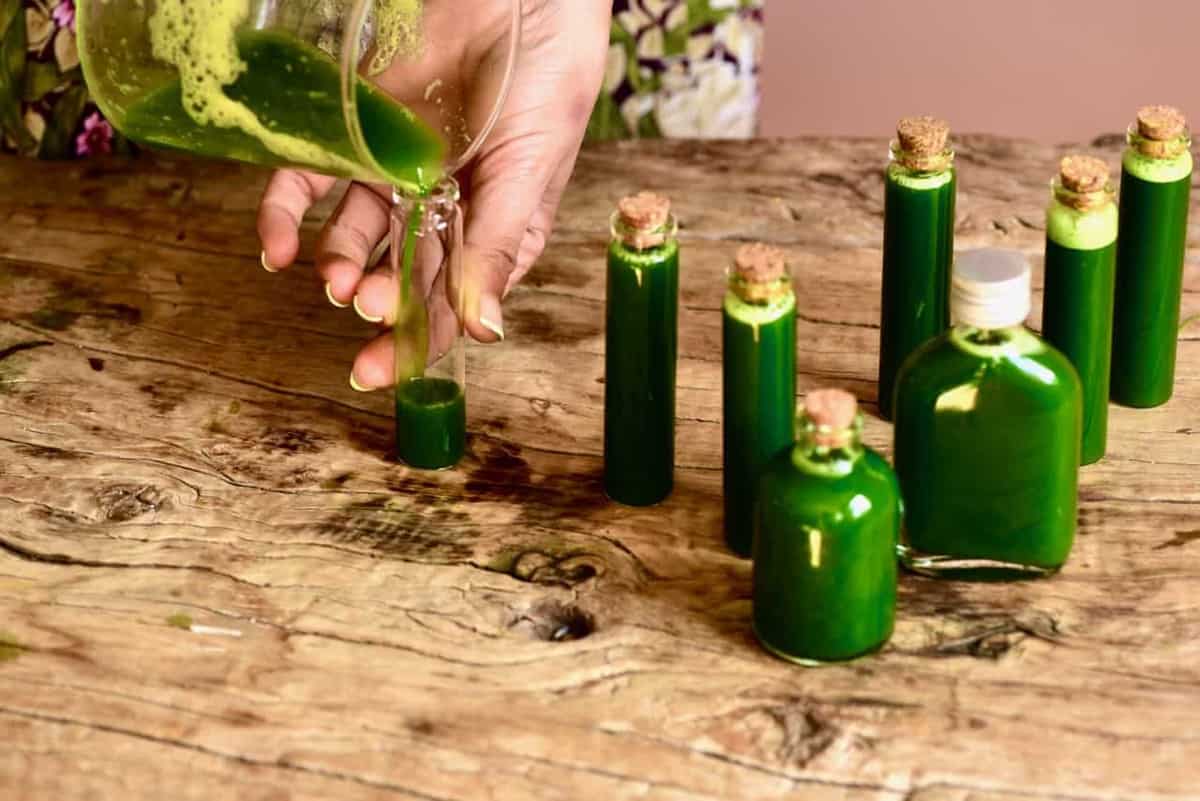
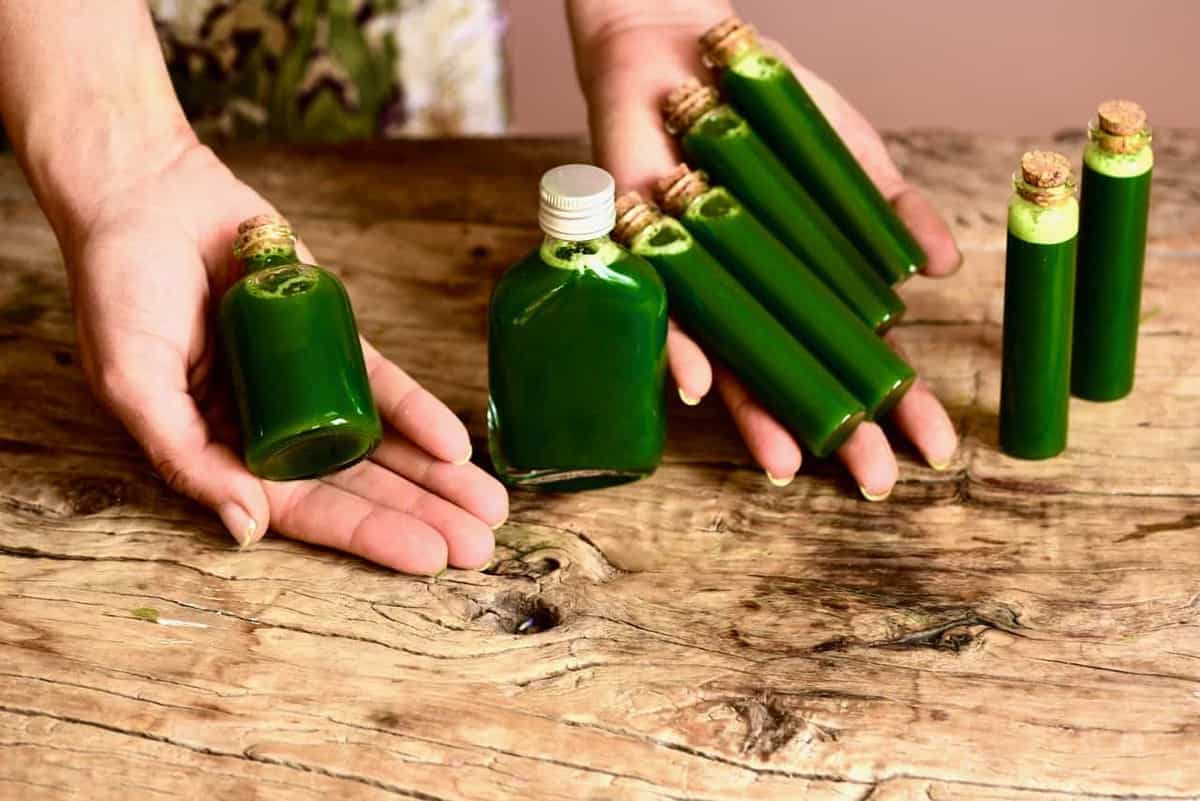
The Blender Method:
If you don’t have a juicer then fear not because you can still make wheatgrass juice, you’ll just need your wheatgrass, a blender, a cup or two of water and either a nut milk mag or cheesecloth (to drain your juice).
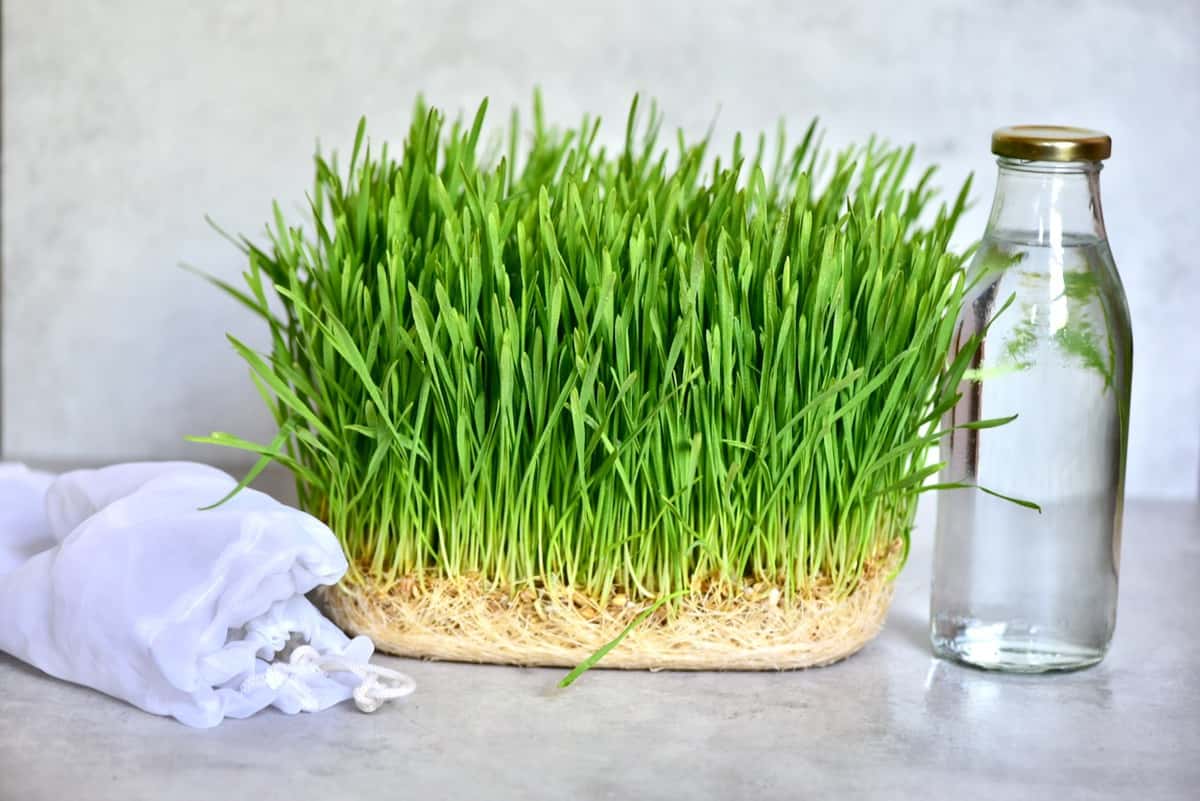
Blend the wheatgrass and water until all the wheatgrass is completely pulverized.
Note* with this method you’ll be left with a lot more pulp – it won’t completely liquify but will be ground down into a pulp within the water.
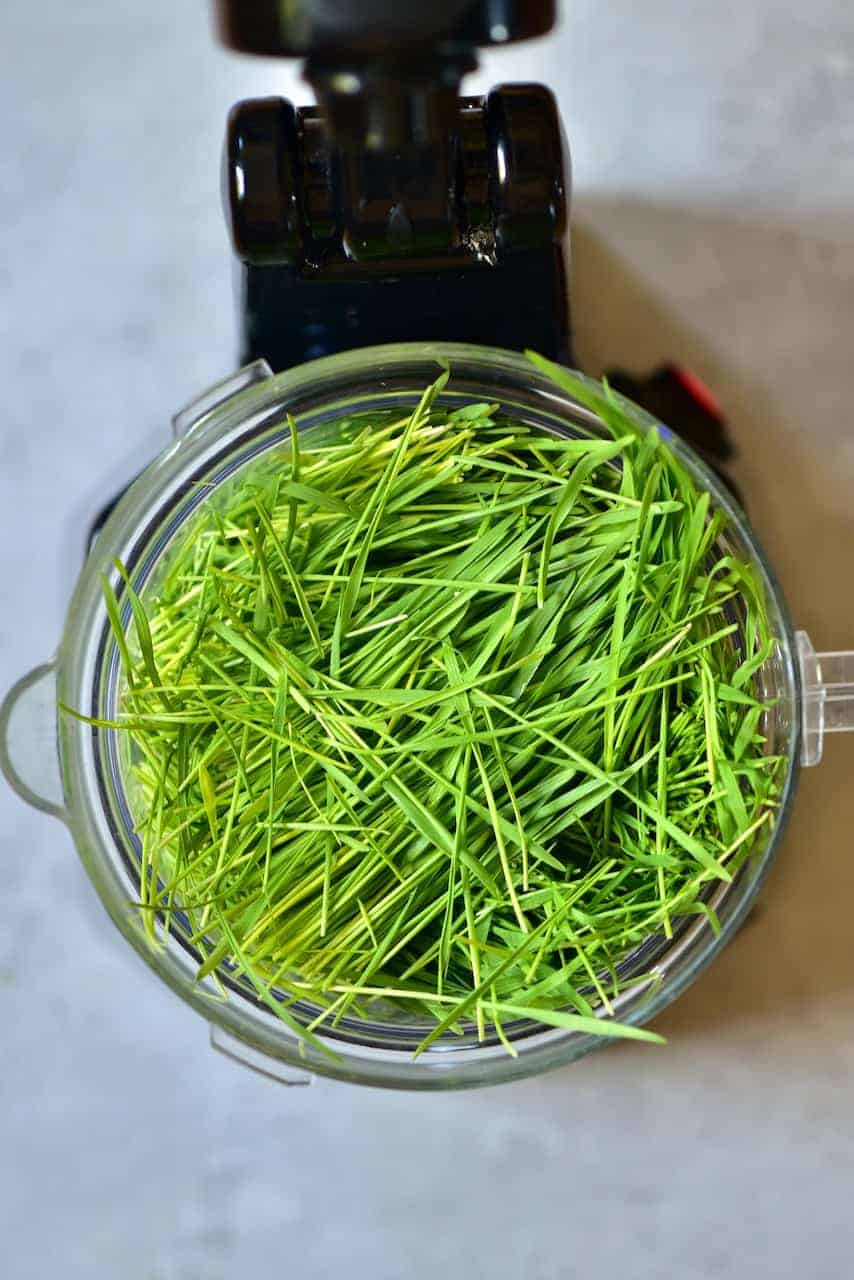
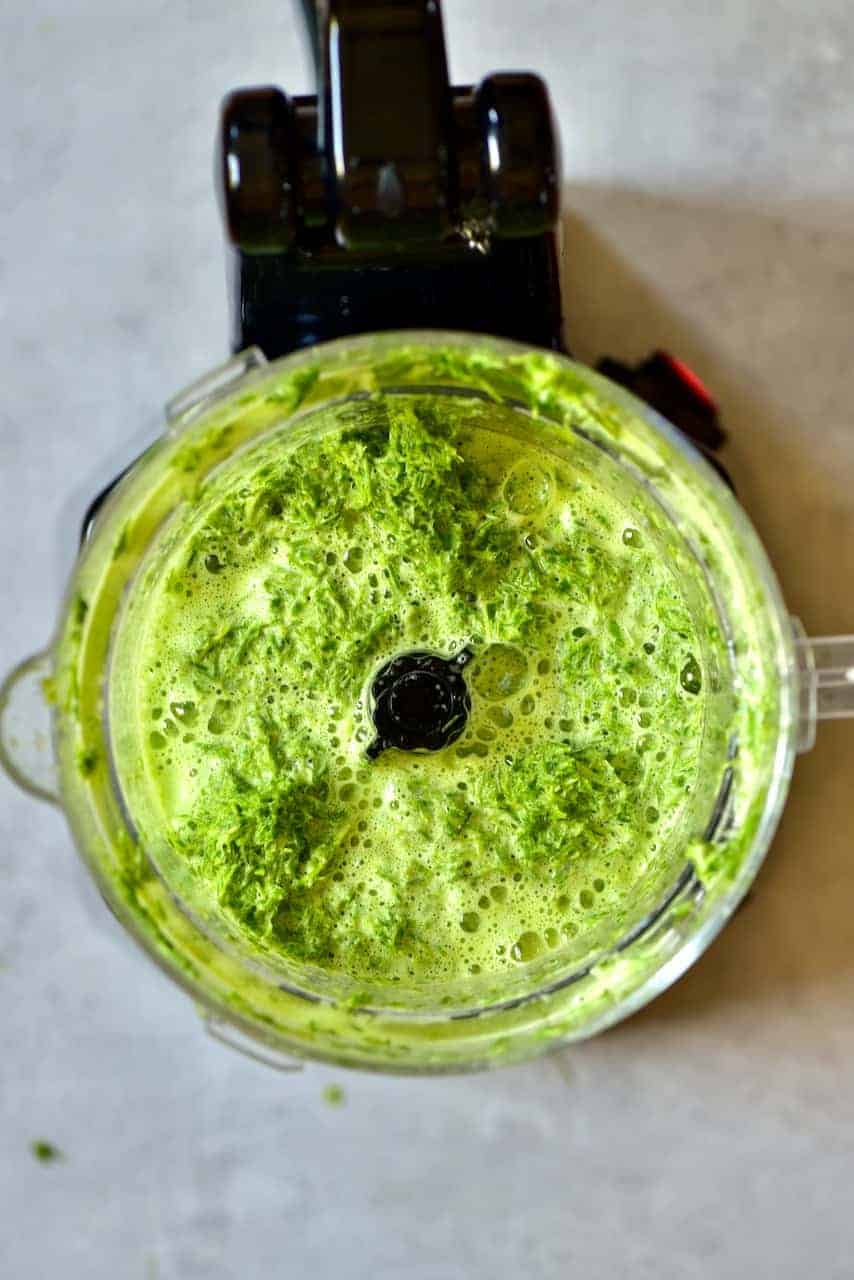
Pass the juice through a nut milk bag (or cheesecloth) to collect the juice.
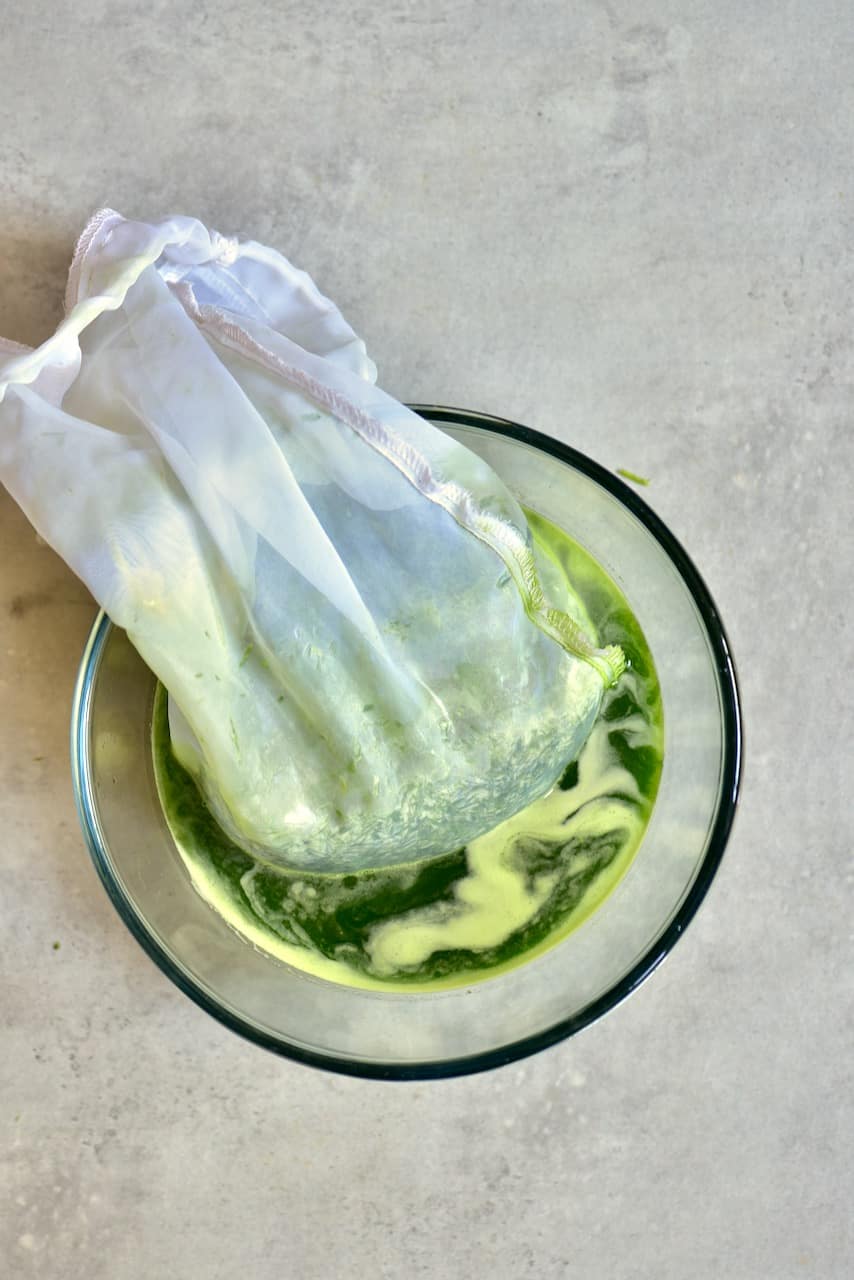
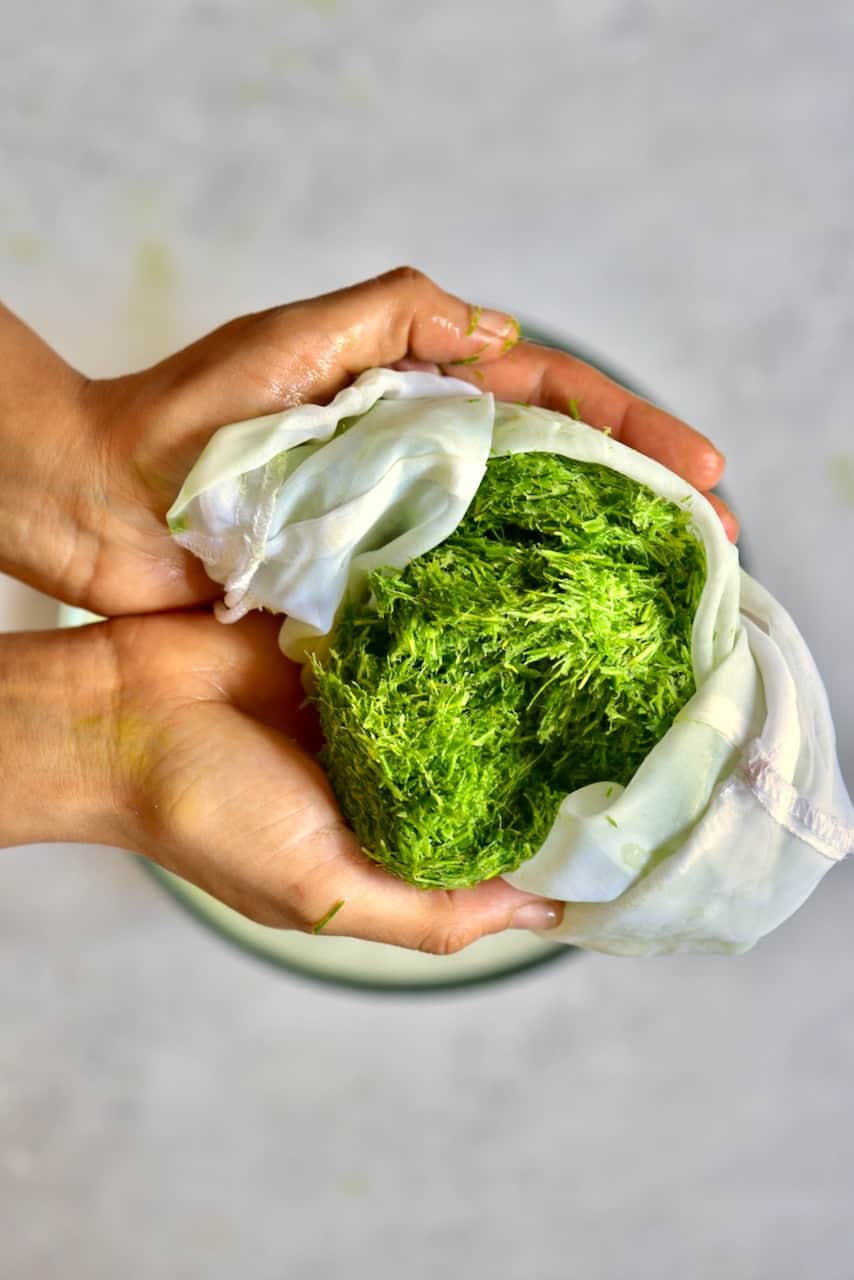
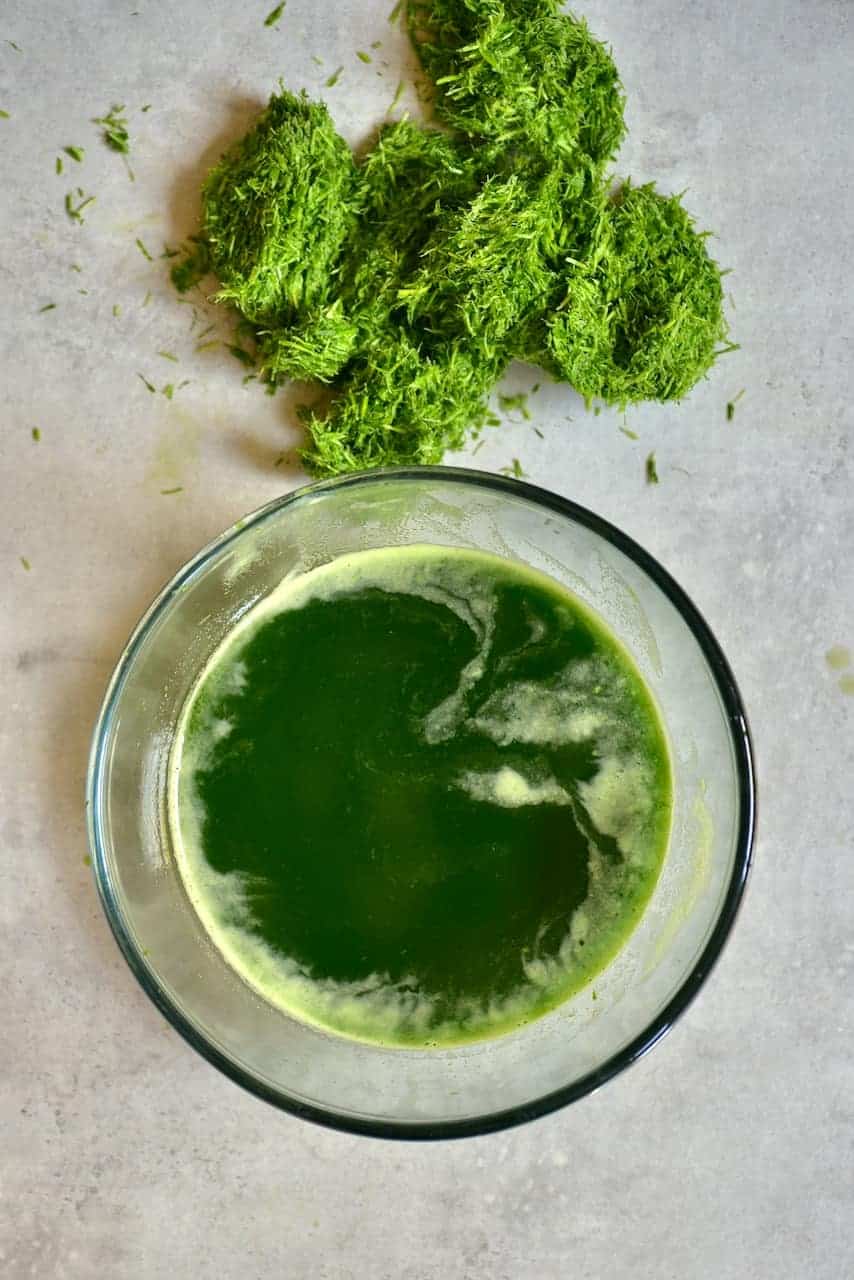
Take care to squeeze out every last drop and get as many nutrients out of the wheatgrass juice that you can.
How to store wheatgrass juice
You can then use this to juice immediately to consume, or it can be kept in the fridge for up to a week (although, it will lose nutritional value over time!). I like to keep mine in shot-sized glass vials (60ml) in the fridge.
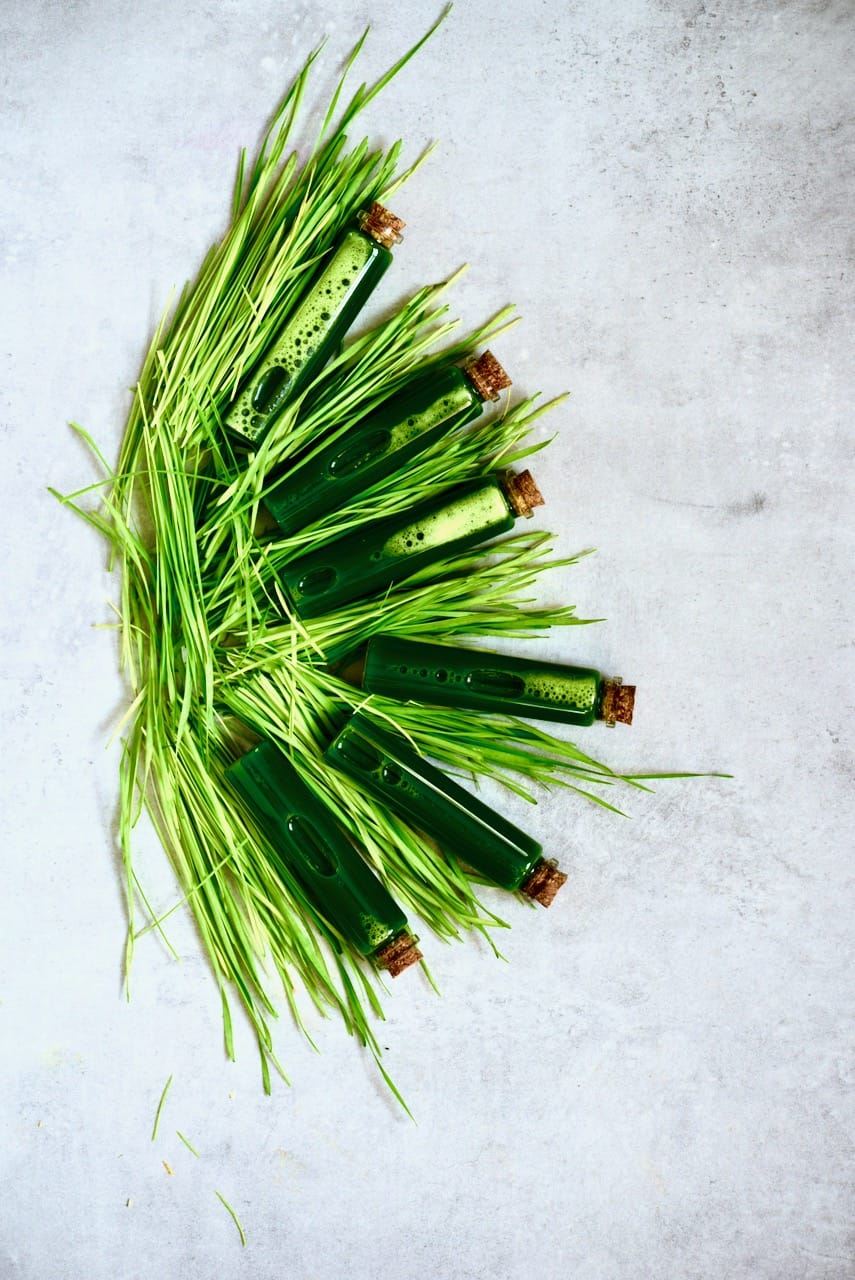
Alternatively, you can freeze portions of 3-4 tbsp (about 60ml) in a large ice-cube tray. Simply thaw one each morning or, as needed.
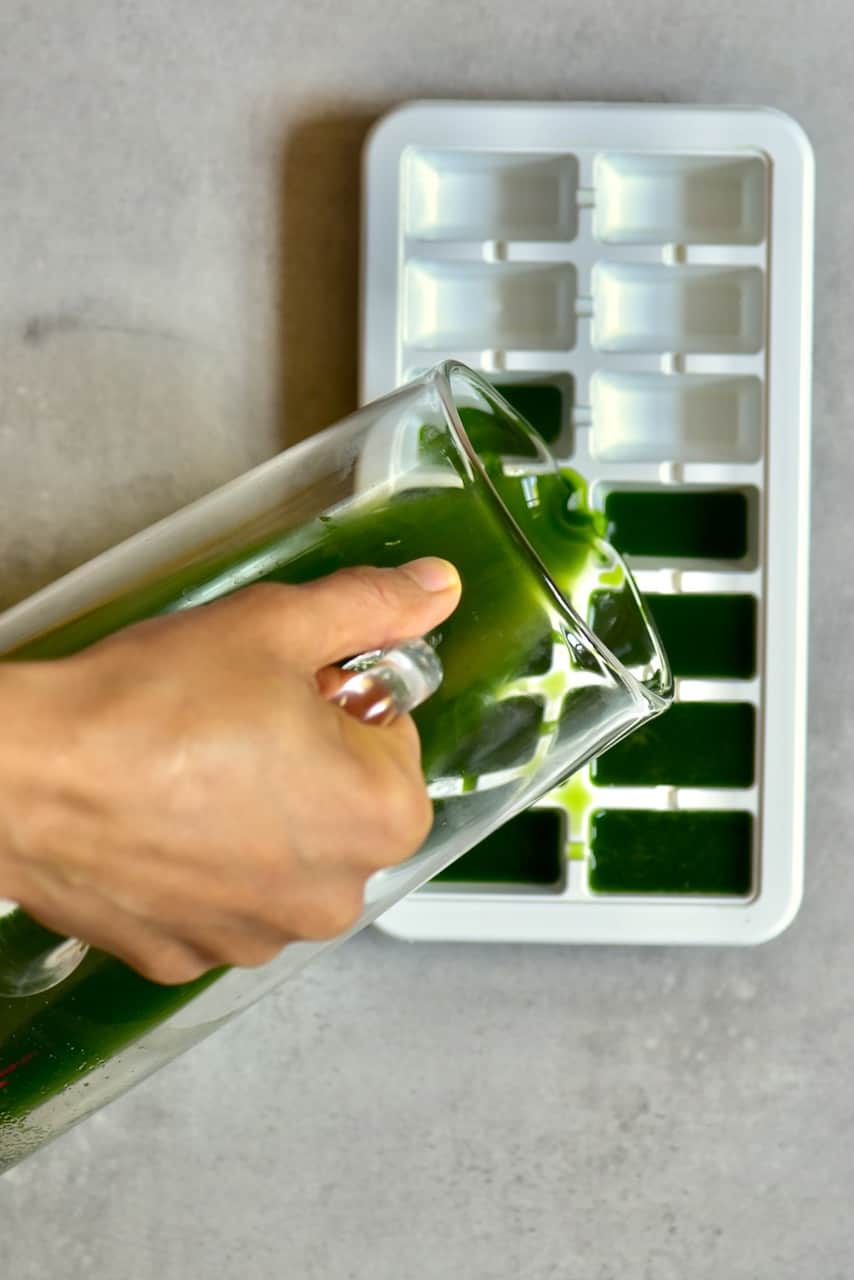
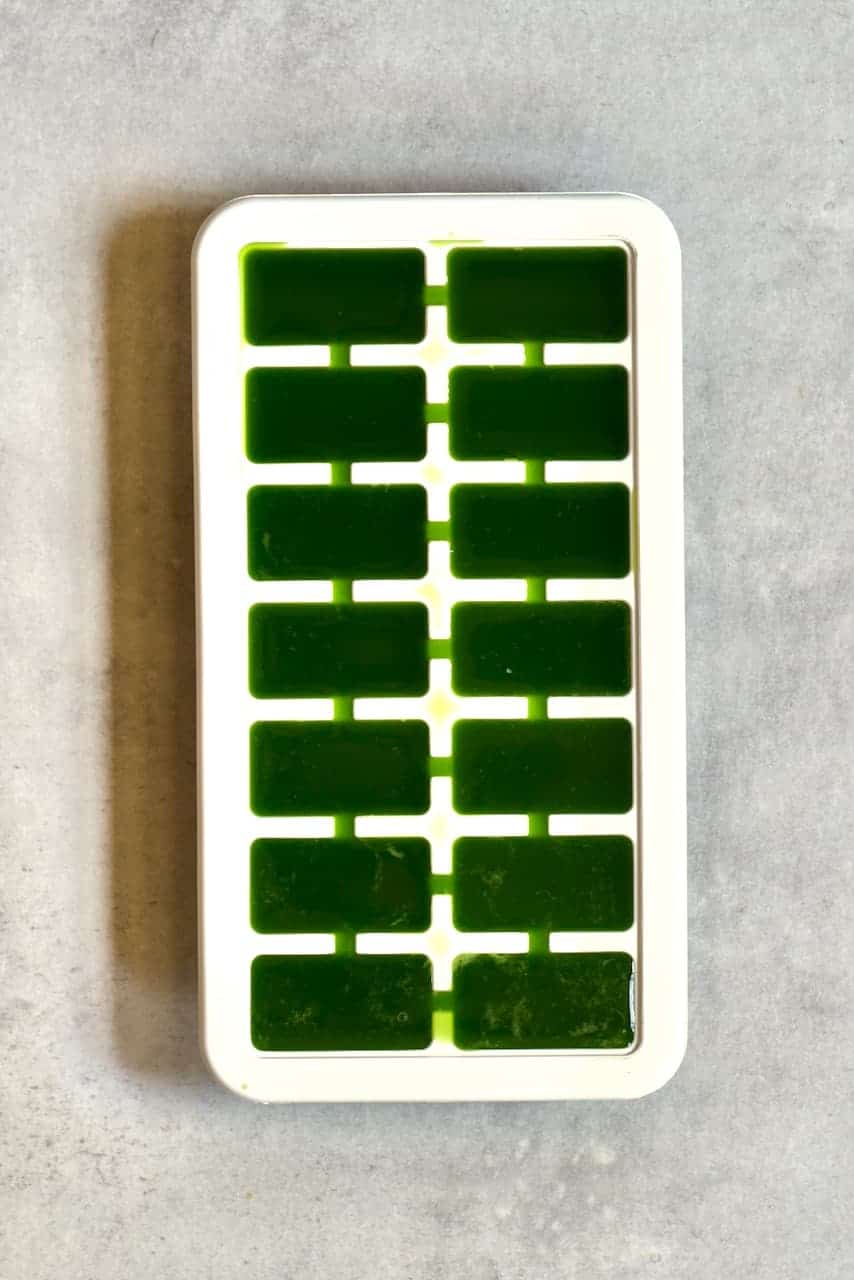
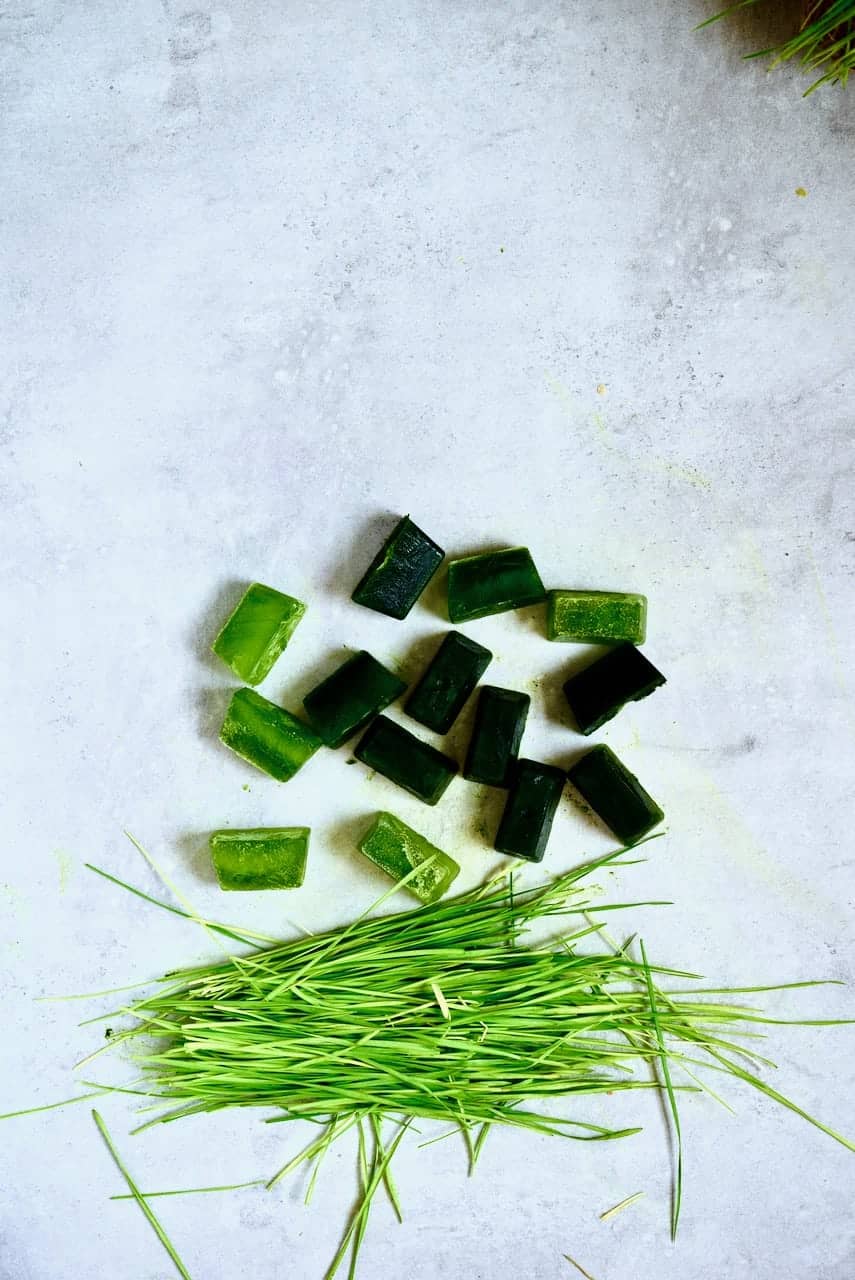
What to do with the leftover pulp

While wheatgrass pulp can be composted, if you want to reduce waste, there are a couple of other options.
Wheatgrass contains a lot of fiber, however, it is undigestible to us as we’re unable to break down the cellulose in the grass. I’ve heard of a few people that happily blend this into a smoothie and drink it just fine though. When blended, the grass has apparently been broken down enough to drink.
Specifically for the blender option – you may not have been able to get all the nutrients out of the wheatgrass the first time. With this in mind, you could try to dehydrate/ dry out the pulp and then crush this into a powder to add to other dishes.
Other recipes you may like
If other juice recipes are what you’re looking for, then you might like this green juice recipe with celery or even these Ginger Turmeric Energy Shots (juicer recipe). You might also like this Beetroot Ginger Juice and Lemon Ginger Immunity Shots.
If you try this simple DIY, then I’d appreciate a rating and your thoughts in the comments below. Also, feel free to tag me in your recreations @Alphafoodie.
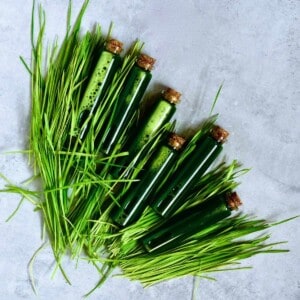
How to Make Wheatgrass Shots and Juice
Ingredients
- 10.5 oz Fresh wheatgrass – check out my Homegrown wheatgrass DIY with & without soil or alternatively, you can buy it.
This will yield about 1 cup / 250 ml juice.
Instructions
- Cut your wheatgrass as low as possible to the root just before you're ready to juice it.
- Rinse the wheatgrass (especially if it's not homegrown) and discard any leaves that have turned completely yellow.
If using a juicer:
- Pass small bunches of wheatgrass through the juicer. It's possible that the juicer may get jammed once in a while, so remove the pulp manually and then continue. Eventually, you'll be left with all the juice and the small amount of leftover pulp (see the blog post for how to use this).
The Blender Method:
- If you don't have a juicer, then fear not because you can still make wheatgrass juice, you'll just need your wheatgrass, a blender, a cup or two of water, and either a nut milk mag or cheesecloth (to drain your juice).
- Blend the wheatgrass and water until all the wheatgrass is completely pulverized. *
- Pass the juice through a nut milk bag (or cheesecloth) to collect the juice. Take care to squeeze out every last drop and get as many nutrients out of the wheatgrass juice that you can.
- How to store the juice: You can consume the juice immediately or it can be kept in the fridge for up to a week (although, it will lose nutritional value over time!). I like to keep mine in shot-sized glass vials (60ml) in the fridge.Alternatively, you can freeze portions of 3-4 Tbsp (about 60ml) in a large ice-cube tray and simply thaw one each morning.
Video
Notes
Nutrition
Nutrition information is automatically calculated, so should only be used as an approximation.










First time trying this I hope I can master it
Hope you liked it, Marlene. Wheatgrass seems hard to juice, but I’m sure you’ll get the hang of it.
Glad I came across this DIY. Never thought about what to do with the pulp, but now I know. Probably would have trashed it, had I not seen this. I’m in the middle of growing my very first batch. I’m so excited! It should be ready to juice in a couple of days. I can’t wait! Thanks so much for all the info! Happy juicing everyone!
I’m glad I could inspire you, Sam. Enjoy! 🙂
HI,
For how long can we storage the shots in the fridge, please?
Thank you
Hi Fabia,
You can store it in the fridge for up to a week but has more nutritional value if you consume it sooner.